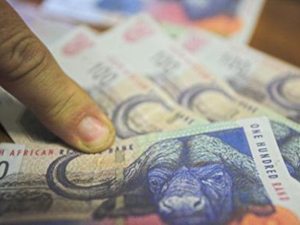
[miningmx.com] – THE R407m takeover of Witwatersrand Consolidated Gold Resources (Wits Gold) last year sees the departure – at least for now – of Johannesburg’s great gold bull, Adam Fleming, from active participation in South Africa’s gold exploration industry.
Fleming, the former chairman of Harmony Gold, in 2006 correctly anticipated a recovery in the gold price, saying memorably that the world’s gold market was “in the foothills’ of a major bull run.
He also forecast, wrongly, that the world’s gold mining companies would return to the riches of the historic Witwatersrand gold basin. It’s hard to see that happening, especially as Wits Gold itself has demonstrated how difficult building new gold mines in the region can be.
The company is wrapping up its business having witnessed a harrowing loss of value in the last two years.
Whereas Wits Gold once traded at R94.50, giving it a market value of over R3bn, the counter is now worth R369m. This follows Sibanye Gold’s R406m bid for the company last week which effectively brings the curtain down on Wits Gold after seven years of existence.
And whereas Fleming once boasted wealth in Wits Gold of about R750m, equal to a 26% stake in the company, that has now diminished to just over R100m. It’s a sign of the times that investors have lost faith with South Africa’s gold exploration story.
The whisper in the market is that Wits Gold’s attempts to raise capital to repay a R40m loan, provided by a Fleming company, were proving troublesome. Equally difficult to digest for Wits Gold was its growth target Burnstone which had been developed for a breathtaking $800m or R8bn by the now bankrupt Great Basin Gold.
Wits Gold had successfully bid for Burnstone from Great Basin’s liquidators offering R100 and offering to take over $177.3m in bank debt owed by Southgold, Great Basin’s subsidiary. Wits Gold had committed to provide a R950m loan for working capital and capital expenditure at Burnstone.
Wits Gold’s other projects, such as De Bron-Merriespruit (DBM), were also looking difficult to fund. DBM had a peak funding requirement of about R2.37bn. As of December 31, 2012, Wits Gold had cash and cash equivalents of R15m. Fleming then tried to support Wits Gold’s share by buying up 66,000 shares.
The bid from Sibanye Gold, a 47% premium to Wits Gold 30-day weighted average price probably presented Fleming with an easy choice, and other shareholders too who had been effectively locked into the company given its lack of liquidity. At the time of the announcement, some 56% of Wits Gold shareholders had accepted the Sibanye Gold offer.
For Sibanye Gold’s Neal Froneman, who once worked at Harmony Gold, this was a waiting game executed with opportunism. Macquarie Research correctly speculated in December 2012 following the formation of Sibanye Gold that Wits Gold would be a good fit for the company.
By waiting a year, Sibanye was able to buy Wits Gold by about R290m less. Speaking to Miningmx in December last year, Fleming said it was “a good deal’ for Wits Gold shareholders, and that he would take the proceeds from the buyout and reinvest them in Sibanye Gold.
“I think Neal is poised to do the ultimate consolidation in South Africa’s gold industry. Apart from the fact that Wits Gold is a natural extension of Beatrix (its DBM is adjacent to Sibanye Gold’s mature Beatrix mine in the Free State), I think Neal has got the power and the energy to pull this off,’ he says.
Fleming sticks by his view that South Africa will once again become the focus of global gold company interest. “It’s where the gold is. I cannot believe the world will never come back here. What we’re seeing now is temporary noise; it will dissipate,’ he says.








